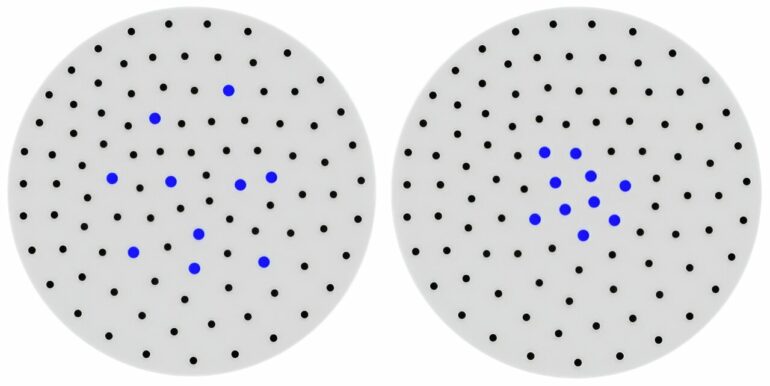Entanglement is what Einstein called “spooky action at a distance.” It is a key part of what distinguishes quantum mechanics from our everyday experience. In quantum mechanics, scientists use a measurement called entanglement entropy to quantify the amount of the entanglement between two subsystems—for example, between a system being studied and its environment.
Large entanglement entropies indicate that a system has strong correlations to its environment. In many systems, the entanglement entropies are proportional to the area that separates a system from its environment. This is also true for black holes, where the energy-related entropy growth is proportional to the area of the event horizon. But the nuclei of atoms are different. The complicated interactions in nuclei lead to entanglement entropies that grow like the volume of the system of interest, not like its surface area.
Computing the state of a quantum system is hard because doing so requires scientists to accurately capture the system’s entanglement with its environment. Recent research quantifies entanglement entropies for neutron matter.
Researchers studied entanglement entropies between the mean-field space and its environment in nuclear systems. The study is published in the journal Physical Review C.
Using related measures, the research also quantifies this entropy for atomic nuclei. This work can contribute to quantum computing by helping researchers understand how the number of operations necessary to prepare a state on a quantum chip grows with increasing entanglement entropy.
As entanglement entropies are hard to compute, the researchers also derived relations to easier-to-compute measures. The research showed that entanglement entropies are related to other quantities that are easier to compute and that can serve as entanglement witnesses.
General arguments also suggest that the entanglement entropy in nuclear systems fulfills a volume law instead of an area law. This work tested and confirmed these results by computing entanglement entropies of models for atomic nuclei and neutron matter.
More information:
Chenyi Gu et al, Entanglement entropy of nuclear systems, Physical Review C (2023). DOI: 10.1103/PhysRevC.108.054309. On arXiv: DOI: 10.48550/arxiv.2303.04799
Provided by
US Department of Energy
Citation:
Entanglement entropies of nuclear systems found to grow as the volume of those systems (2024, March 25)



